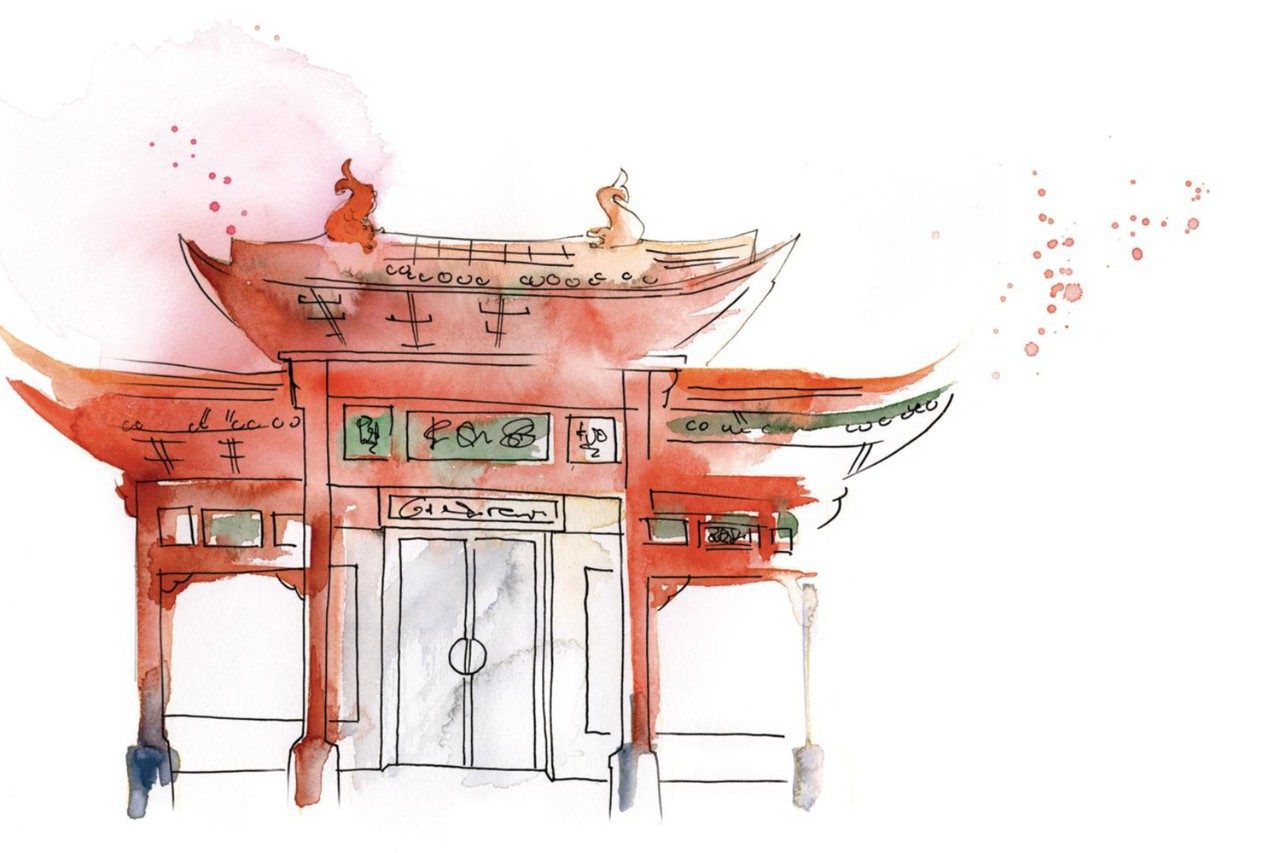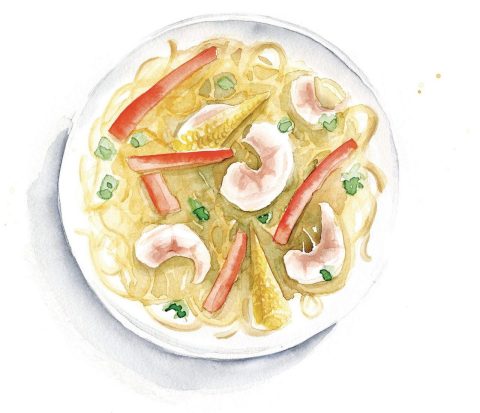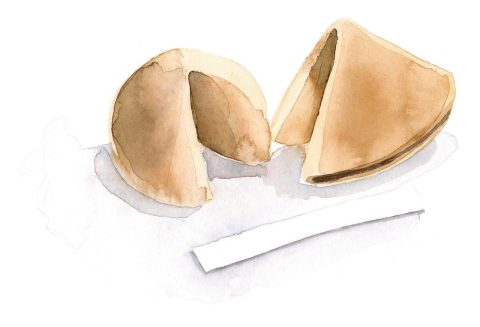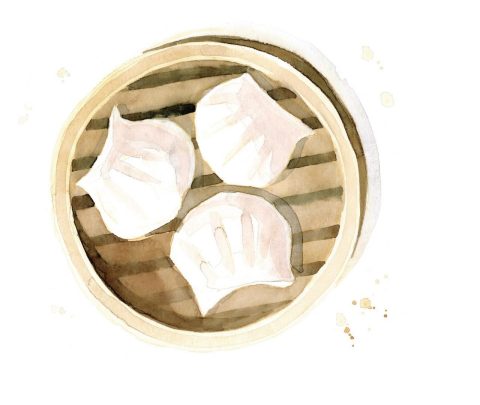Where to Find the Best Chinese Outside of Australia’s Capital Cities

Beef in black-bean sauce and special fried rice have – for the longest time – added another dimension to the unique flavour of regional Australia.
They’re the immediately recognisable culinary beacons that grace many an Australian country town: red and gold lettering in the window, tasselled lanterns, maybe even a roof designed to look like a pagoda. Yes, regional Australia is alive with the clacking of chopsticks and the twirling of lazy Susans. Over many decades, the Chinese restaurant has become part of the fabric, the reliable bringer of beef in black-bean sauce, sweet-and-sour pork and special fried rice. Behind each restaurant are often generations of the same family keeping the traditions alive, rocking the same décor but also moving with
the times as diners become more adventurous and “authenticity” becomes a buzzword.
Chinese cuisine in Australia has a complex and colourful history. Researcher Dr Barbara Nichol, who specialises in the evolution of Chinese food culture in Australia, says the original restaurants were basic “cook-shops” that catered for Chinese diggers who arrived during the 1850s gold rush.
“Chinese restaurants were right up there in seeing sociocultural change,” says Barbara. “They were also the first [in Australia] to prepare takeaway food, for people who took their billies and saucepans along.”
These days, the takeaway might come in plastic containers but tradition still reigns supreme. Here, we discover the stories behind eight of the country’s best Chinese eateries...
Tasmania

T’s Chinese Restaurant
“Paddock to plate” is a phrase not often heard when it comes to Chinese restaurants in rural Australia but the Zhao family is here to change that. Originally from Xinjiang in north-west China, the family moved from Sydney to Sheffield in north-west Tasmania in 2001.
At first, they turned their hands to farming Dorper sheep. “It wasn’t supporting a family of five so we opened an ice-cream shop on the main street for a bit of extra income,” says Alex Zhao, who studied agriculture and runs T’s Chinese Restaurant with his parents, Victor and Sonya. “After the GFC, the European tourist market crashed. Asian tourists dominate now so we thought we’d convert the shop into a restaurant.”
T’s point of difference – beyond the fact it’s supplied with the farm’s lamb, free-range Berkshire pork and grass-fed beef (“and we’re currently looking into chicken,” says Alex) – is the focus on regional Xinjiang cuisine. Dishes are spicier than southern Chinese food and feature more lamb.
The Xinjiang lamb pilaf, made with onion, carrots and sultanas, proudly flies the north-west flag and is testament to the area’s Muslim population. In memory of the restaurant’s earlier incarnation, the Zhaos make their own ice-cream to go with the banana fritters.
85 Main Street, Sheffield; (03) 6491 2244
Northern Territory
Happy Garden
It’s fair to say Darwin’s Happy Garden restaurant got off to a pragmatic start when it opened in 1981 as a combined fish’n’chip shop and Chinese takeaway. Three years later came the opportunity to take over the restaurant next door. “We knocked down the wall, built a new kitchen and have been here ever since,” says Jason Lee. His parents, who are Hakka Chinese, migrated to Darwin from Timor-Leste, while his grandparents hail from China’s south in Guangdong province.
You’ll find Aussie-Chinese staples, like beef in black-bean sauce and sweet-and-sour pork, at this brightly tiled restaurant with a pagoda-esque roof. Some 37 years in the Top End has seen the introduction of locally influenced dishes, including crocodile in XO sauce. (“If you don’t tell people what it is, they generally think it’s chicken,” says Jason.) Some of his mum’s home-style dishes, such as the Hakka-influenced chicken and potato stir-fry, have also infiltrated the menu.
2 Parap Place, Darwin; (08) 8981 9302
Queensland

Mandarin Court Restaurant
Its tasselled lanterns and elaborate pagoda-style roof have been decorating Mermaid Beach since 1979, making Mandarin Court the grande dame of the Gold Coast’s Chinese restaurant scene. Contrary to its name, it sells Cantonese food with a Hong Kong accent, a nod to the Ma family’s origins. “In the late 1970s, there were more people from Hong Kong coming here; mainland Chinese couldn’t leave,” says owner Raymond Ma, who took over from his uncle in 1990.
Mandarin Court serves yum cha and Peking duck (carved at the table), plus premium seafood, including lobster and mud crabs, from a tank. “For birthdays, we embarrass the hell out of the diner with a cake and singing,” says Raymond. “The Gold Coast has really changed over the years and we’ve changed with it. It’s a lot more cosmopolitan, with a lot more competition.”
2374 Gold Coast Highway, Mermaid Beach; (07) 5572 3333;
NSW
New Bo Wa
Moree, in the heart of the state’s northern wheatbelt, has a Chinese restaurant that punches above its weight. New Bo Wa is regularly named a finalist – and was twice the outright winner – of the best Chinese eatery in the regional NSW category at the Savour Australia awards.
Its roots go back to the more simply monikered Bo Wa, which opened on Frome Street in 1977. New Bo Wa came about in 1981 when the white linen tablecloths, chopsticks and lazy Susans were moved a few blocks down the street.
“The grandpas opened it,” says Whitney Lai, who runs the restaurant with her husband, Ernest. She’s the third generation of the family to operate it, having taken over from her uncles, George and Edward Wong, on their retirement last year.
Whitney says there’s not a big Chinese population in Moree – “Including our family, maybe 30 or 40 people” – but New Bo Wa is kept busy with customers of all stripes seeking out its roast duck with plum sauce. Prawn cutlets are also popular, as is the braised chicken in bird’s nest (really just fried potato) that Whitney proclaims is “the best in Australia”.
358 Frome Street, Moree; (02) 6752 3280
Victoria

Toi Shan
Melbourne’s celebrated Chinatown has some veteran restaurants but Bendigo’s Toi Shan is reputedly the oldest Chinese eatery in Australia – it’s been operating for more than 120 years.
Opened in 1892, it’s emblematic of the gold rush in Ballarat and Bendigo, which saw more than 16,000 Chinese walk to the Victorian goldfields from South Australia to avoid the harsh taxes that were imposed to limit Chinese migration.
The unpretentious shop has changed hands a number of times – most recently in 2003, when it was sold after more than 40 years – and it was also moved after a fire gutted the original restaurant on nearby Bridge Street. The reliable menu includes barbecued roast pork and a cast of housemade dim sims.
65 Mitchell Street, Bendigo; (03) 5443 5811
South Australia
Gawler Palace Chinese Restaurant
Gawler Palace has taken a circuitous route through more than four decades of ownership. Vinh Chiem’s parents bought the restaurant from the original Chinese owners in 1977 and ran it for 10 years before selling it to Vinh’s uncle. “He ran it for about 18 years and then, a decade ago, sold it back to us,” says Vinh, now in his thirties, who has photos of himself as a toddler running around the dining room.
Hugging the outskirts of Adelaide, en route to the Barossa, Gawler Palace is a family affair. Father Thanh is head chef, mother Kim oversees the floor and brother Phong is sous chef. Vinh, who’s in charge of stock and calls orders, says it works because they each have their own area.
As for the menu, Vinh says, “It’s very traditional Australian Chinese, which does well for us: fried rice, honey chicken, spring rolls and dim sims. When mainland Chinese people come here and look at the menu, they get confused because it’s so westernised.” The family’s Vietnamese heritage can be seen in south-east Asian classics, including a long-simmered pho.
38 Murray Street, Gawler; (08) 8522 2177
Western Australia
Son Ming
The pearl meat with cashews is the first hint of Son Ming’s link with Broome’s Chinese past. The pearling industry attracted a multicultural mix of people and the Chinese generally opted for auxiliary roles, working as shopkeepers and cooks. Evidence of that exists today in the Chinatown that’s been subsumed into Broome’s main shopping district.
Guangdong natives Hong and Sam Yu opened the restaurant in 1993 on the same site that Sam’s great-grandfather, who arrived in Broome in 1893, ran a shop. Son Ming is an unprepossessing affair but the pearl meat – which has a similar texture to abalone – is an unexpectedly luxe discovery, while the sweet-and- sour dishes make perfect sense in the Broome heat.
14 Carnavon Street, Broome; (08) 9192 2192
ACT
Happy’s Chinese Restaurant
Not only is Happy’s the oldest of Canberra’s many Chinese restaurants, it’s also a barometer of the cuisine’s changing image in Australia. When Happy’s opened in 1962, “Canberra was a small country town,” says Gavin Chan, the third generation of his family to run the popular restaurant in the city centre. “Until the late 1970s, we sold T-bone steaks. It was very much like a bistro with Chinese food.”
Gavin’s grandfather was dubbed “Happy” for his perpetually cheerful personality. He arrived in Australia in the 1950s and worked as a market gardener in Queensland before trying his luck in Canberra. “He didn’t have a word of English so he’d just smile and laugh when people talked to him,” says Gavin. “When he went to the local immigration office, they put ‘Happy’ as his last name on his passport.”
Happy’s biggest obstacle was not getting diners to try new things but rather sourcing the ingredients. “Tofu, water spinach, most Asian greens… We couldn’t get them. We had to use broccoli instead,” says Gavin. “For something as simple as rice noodles, we had to get dried ones imported, as well as tinned Chinese vegetables. These days, we serve much more traditional Cantonese food.”
17 Garema Place, Canberra; (02) 6249 7015


